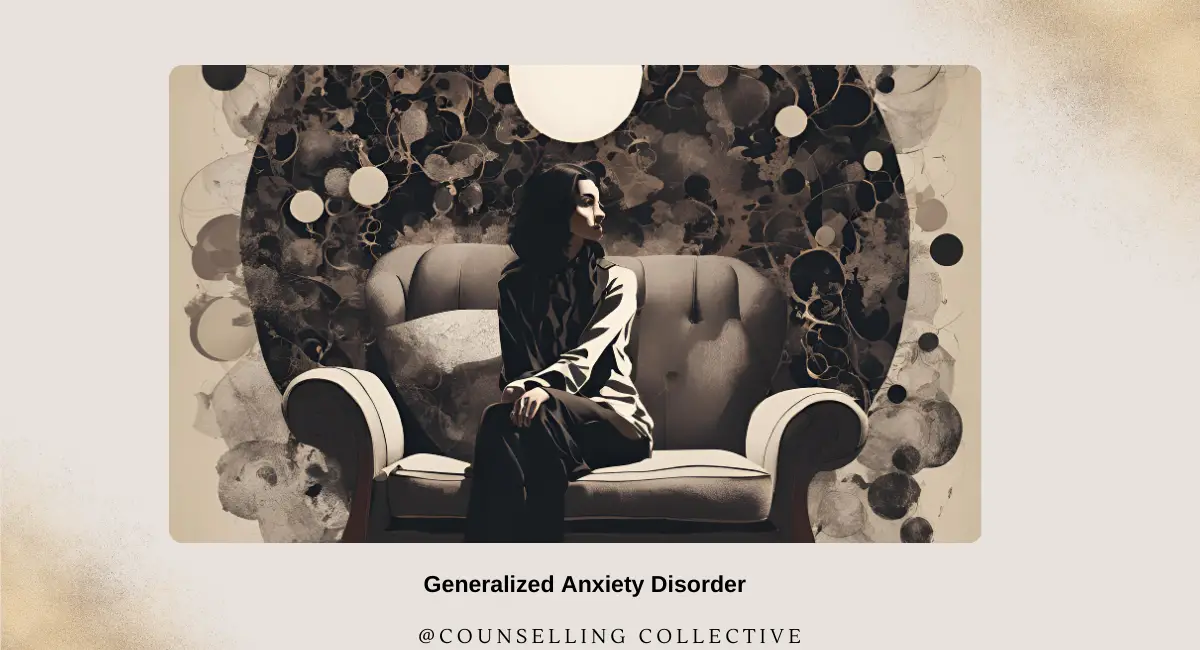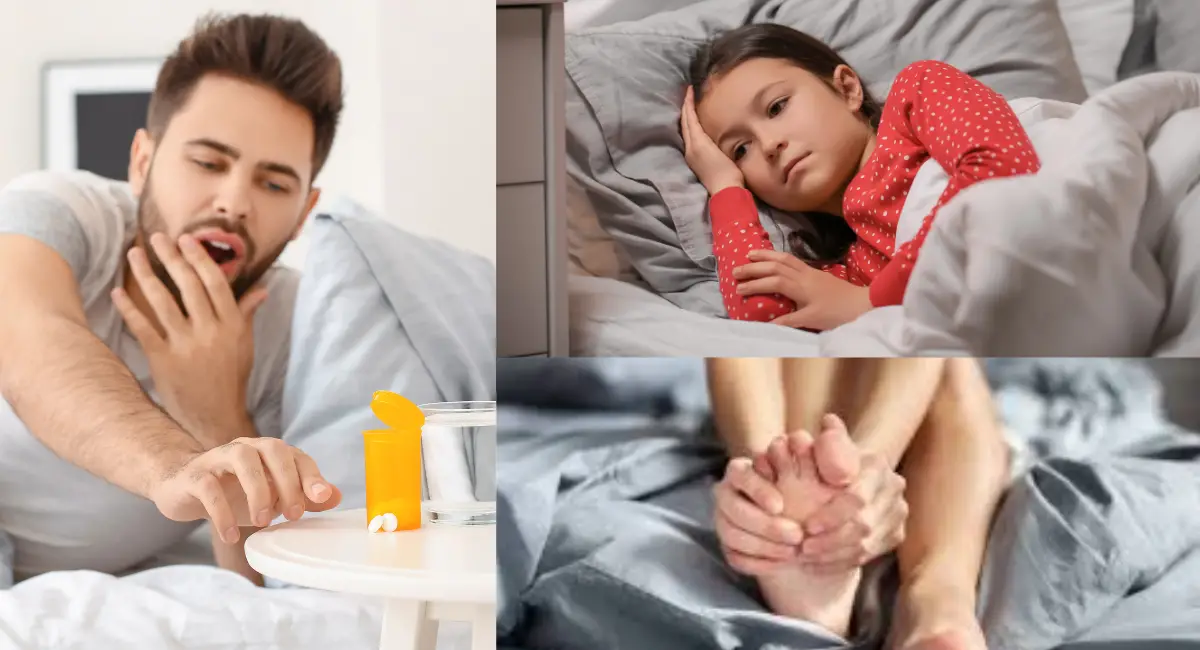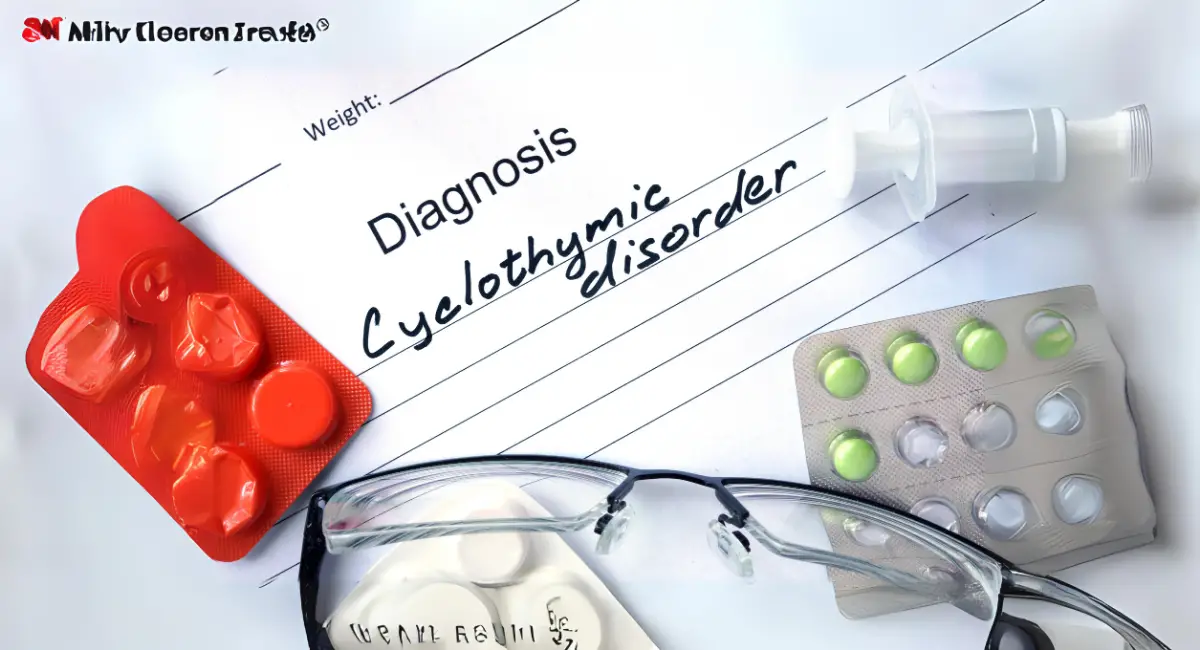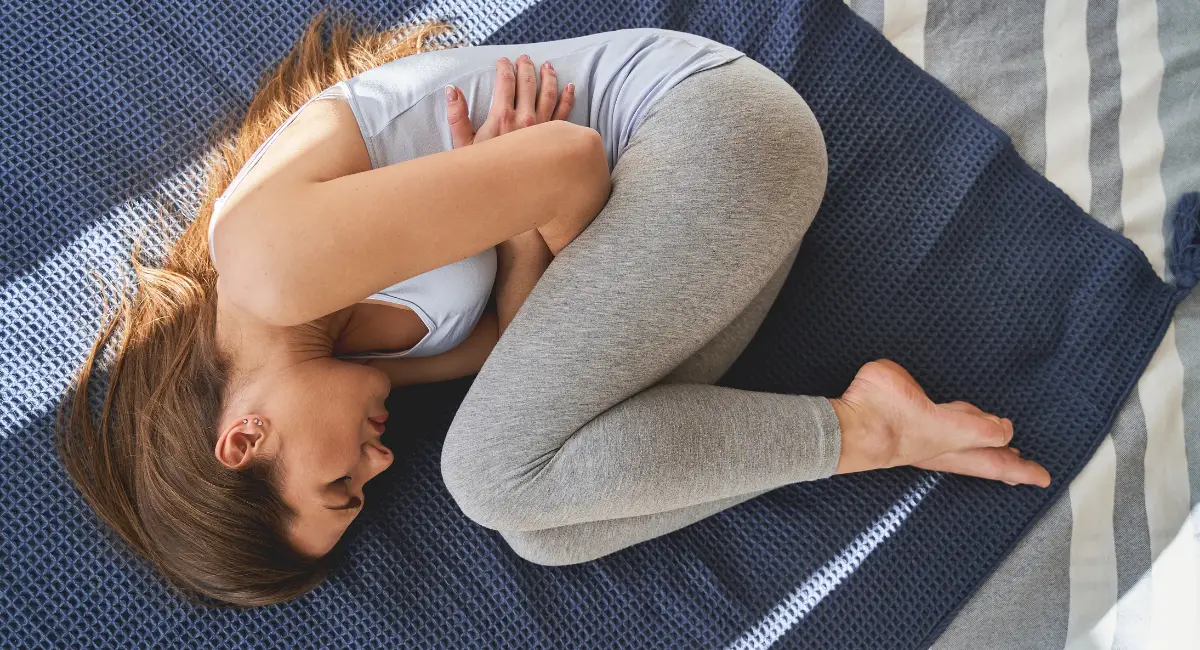
Periodic Limb Movement Disorder: Symptoms, Causes, and Therapy Options
Contents
Introduction
Periodic Limb Movement Disorder (PLMD) is a sleep disorder characterized by repetitive, involuntary movements of the limbs, most commonly the legs, during sleep. These movements can occur every 20 to 40 seconds and often disrupt the individual’s sleep, leading to excessive daytime sleepiness, fatigue, and impaired functioning While PLMD can occur independently, it is often associated with other sleep disorders, such as Restless Legs Syndrome (RLS) or sleep apnea. The movements usually involve jerking, twitching, or flexing the limbs, often causing brief awakenings without the individual being fully aware of the disruption.
According to the International Classification of Sleep Disorders (ICSD-3) and the Diagnostic and Statistical Manual of Mental Disorders, Fifth Edition (DSM-5), PLMD is diagnosed when these limb movements occur frequently enough to disrupt sleep or cause significant daytime impairment. This article will explore the Symptoms, Causes, and Therapy Options for Periodic Limb Movement Disorder in detail.
Symptoms of Periodic Limb Movement Disorder (PLMD)
The symptoms of PLMD involve repetitive leg movements during sleep that can lead to sleep disruption and daytime fatigue. Below is a table outlining the common symptoms and examples of how they manifest:
| Symptom | Description/Example |
|---|---|
| Repetitive, Involuntary Limb Movements | Individuals experience rhythmic jerking or flexing of the legs, typically occurring every 20-40 seconds during sleep. These movements may involve the toes, ankles, knees, or hips. |
| Sleep Fragmentation | The limb movements frequently disrupt sleep, causing brief arousals or awakenings. The individual may not remember waking up but feels unrested. |
| Daytime Fatigue | Due to the repeated disruption of sleep, individuals often experience excessive daytime sleepiness, fatigue, or difficulty concentrating during the day. |
| Unaware of Movements During Sleep | Individuals are often unaware of their limb movements during sleep, but a bed partner may notice the repetitive jerking or kicking. |
Causes and Risk Factors of Periodic Limb Movement Disorder (PLMD)
The exact cause of PLMD is not fully understood, but it is believed to involve abnormalities in the central nervous system that control muscle movements. PLMD can also be associated with certain medical conditions and medications. Below are the most common causes and risk factors for PLMD.
1. Central Nervous System Dysfunction
PLMD is thought to result from abnormalities in the brain’s motor control pathways, particularly those involving the regulation of involuntary muscle movements during sleep. The disorder may involve disruptions in the neurotransmitters responsible for controlling muscle tone and movement.
- Dopamine dysregulation has been linked to PLMD, as dopamine plays a critical role in regulating movement. Deficiencies or imbalances in dopamine transmission may lead to involuntary limb movements during sleep.
- The movements in PLMD are often rhythmic and stereotyped, suggesting that they arise from abnormal neural activity in the spinal cord or brainstem, which regulate muscle movements during sleep.
Tom, a 55-year-old man diagnosed with Periodic Limb Movement Disorder (PLMD), experienced involuntary jerking of his legs during sleep. His neurologist explained that these movements were likely due to abnormalities in the areas of his brain responsible for controlling muscle movements, particularly during sleep. These jerks, often occurring in cycles throughout the night, disrupted Tom’s rest and left him feeling fatigued during the day
2. Iron Deficiency
Like Restless Legs Syndrome (RLS), PLMD has been associated with low levels of iron in the brain. Iron is essential for proper dopamine function, and a deficiency can impair dopamine transmission, leading to the movement issues seen in PLMD.
- Iron plays a crucial role in the production and regulation of dopamine, a neurotransmitter involved in controlling muscle movements. Low iron levels can disrupt dopamine function, leading to involuntary limb movements during sleep.
- Iron deficiency is a common cause of PLMD in individuals with conditions like anemia or chronic kidney disease.
Emily, a 40-year-old woman diagnosed with Periodic Limb Movement Disorder (PLMD), underwent blood tests that revealed she was iron deficient. Her doctor explained that low iron levels could be contributing to the involuntary leg movements and disrupted sleep. After starting iron supplements as recommended, Emily noticed a significant improvement in her symptoms.
3. Age-Related Factors
PLMD is more common in older adults, and the likelihood of developing the disorder increases with age. While PLMD can occur in individuals of all ages, it is rare in children and becomes more prevalent after the age of 50.
- The aging process is associated with changes in the central nervous system that can lead to disrupted motor control during sleep. These changes may explain why PLMD is more common in older adults.
- Older adults are also more likely to have coexisting health conditions, such as diabetes or neuropathy, that can exacerbate the symptoms of PLMD.
ohn, a 68-year-old man, began experiencing symptoms of Periodic Limb Movement Disorder (PLMD) in his late 50s, including involuntary jerking of his legs during sleep. His doctor explained that PLMD is more common in older adults, as age-related changes in the nervous system can affect the brain’s ability to regulate muscle movements during sleep.
4. Coexisting Conditions
PLMD often coexists with other sleep disorders or medical conditions, including:
- Restless Legs Syndrome (RLS): Many individuals with RLS also have PLMD, as both disorders involve abnormal limb movements and may share similar underlying causes.
- Sleep apnea: Individuals with obstructive or central sleep apnea are more likely to experience PLMD, as the disruptions in breathing during sleep can trigger limb movements.
- Diabetes and Peripheral neuropathy: Nerve damage associated with these conditions can increase the risk of developing PLMD.
John, a 68-year-old man, began experiencing symptoms of Periodic Limb Movement Disorder (PLMD) in his late 50s. His doctor explained that PLMD becomes more common in older adults, often due to age-related changes in the nervous system. As John’s symptoms progressed, including involuntary jerking of his legs during sleep, it began disrupting his rest and leaving him feeling fatigued during the day.
5. Medications
Certain medications, particularly those that affect the central nervous system, can trigger or worsen the symptoms of PLMD. Medications known to exacerbate PLMD include:
- Antidepressants and antipsychotics can alter dopamine transmission, which may worsen the involuntary leg movements seen in PLMD.
- Antihistamines, commonly used to treat allergies, can have sedative effects that may disrupt the normal regulation of muscle movements during sleep.
arah, diagnosed with Periodic Limb Movement Disorder (PLMD), noticed that her symptoms worsened after she started taking an antidepressant. The increased frequency and intensity of leg jerks during sleep left her feeling more fatigued. Concerned about the changes, Sarah consulted her doctor, who explained that certain medications, including antidepressants, can exacerbate PLMD symptoms. After adjusting her medication, Sarah saw significant improvements in her condition.
Therapy and Treatment Options for Periodic Limb Movement Disorder (PLMD)
Treatment for PLMD focuses on reducing the frequency and severity of limb movements during sleep and improving overall sleep quality. Effective therapy options include Cognitive Behavioral Therapy for Insomnia (CBT-I), Pharmacotherapy, and Lifestyle Modifications.
1. Cognitive Behavioral Therapy for Insomnia (CBT-I)
Cognitive Behavioral Therapy for Insomnia (CBT-I) is a non-pharmacological approach that helps individuals improve their sleep by addressing behaviors and thought patterns that contribute to sleep disturbances. For individuals with PLMD, CBT-I can help alleviate the anxiety and frustration that often accompany sleep disruptions.
- CBT-I focuses on improving sleep hygiene, establishing a consistent sleep schedule, and creating a relaxing pre-sleep routine. It also addresses any negative thoughts or behaviors that may worsen sleep disturbances, such as worrying about the limb movements.
- Relaxation techniques such as progressive muscle relaxation and deep breathing can help reduce physical tension and improve the individual’s ability to fall and stay asleep.
John, diagnosed with Periodic Limb Movement Disorder (PLMD), attended Cognitive Behavioral Therapy for Insomnia (CBT-I) sessions to manage his anxiety about his leg movements during sleep. Through these sessions, he learned various relaxation techniques, such as deep breathing, progressive muscle relaxation, and mindfulness, which helped him reduce the stress and anxiety that often intensified his symptoms.
2. Pharmacotherapy
Medications are commonly prescribed to manage the symptoms of PLMD, particularly when the condition causes significant sleep disruption. Dopamine agonists, anticonvulsants, and other medications can help reduce the frequency of limb movements during sleep.
- Dopamine agonists (e.g., pramipexole, ropinirole) are first-line treatments for PLMD. These medications mimic the action of dopamine in the brain, helping to regulate muscle movements and reduce the leg jerking.
- Gabapentin and other anticonvulsants can help manage PLMD symptoms by stabilizing nerve activity and reducing the involuntary movements during sleep.
- Iron supplements may be recommended for individuals with iron deficiency, as restoring iron levels can improve dopamine function and reduce limb movements.
Michael, diagnosed with Periodic Limb Movement Disorder (PLMD), was prescribed ropinirole by his sleep specialist to help manage his symptoms. After starting the medication, Michael noticed a significant decrease in the involuntary leg movements that had been disturbing his sleep. As a result, he was able to sleep more soundly through the night and woke up feeling more rested and alert during the day.
3. Lifestyle Modifications
Lifestyle changes can play an important role in managing PLMD symptoms. These changes often focus on improving overall sleep hygiene and addressing factors that may exacerbate limb movements.
- Regular exercise during the day can help reduce muscle tension and improve circulation, which may alleviate the symptoms of PLMD.
- Avoiding stimulants such as caffeine and nicotine, particularly in the evening, can help prevent the worsening of PLMD symptoms.
- Stretching exercises before bed can help relax the muscles and reduce the frequency of leg movements during sleep.
Emily, diagnosed with Periodic Limb Movement Disorder (PLMD), started incorporating leg stretches into her evening routine to relax her muscles before bed. Additionally, she reduced her caffeine intake, as it was known to exacerbate the frequency of her leg movements during sleep. These changes, combined with a focus on improving her sleep hygiene, helped to decrease the intensity and frequency of her PLMD symptoms.
Long-Term Management of Periodic Limb Movement Disorder (PLMD)
Long-term management of PLMD involves ongoing therapy, lifestyle changes, and, in some cases, medication to control symptoms and prevent relapse. Key strategies for long-term management include:
- Consistent Sleep Routine: Maintaining a regular sleep schedule can help regulate the body’s sleep-wake cycle and reduce the frequency of limb movements.
- Regular Physical Activity: Engaging in light to moderate exercise can improve circulation and reduce restlessness in the legs, helping to alleviate PLMD symptoms.
- Medication Management: For individuals on dopamine agonists or other medications, adhering to the prescribed regimen is essential for controlling symptoms and maintaining good sleep quality.
Conclusion
Periodic Limb Movement Disorder (PLMD) is a sleep disorder characterized by repetitive, involuntary leg movements during sleep, which can lead to disrupted sleep and daytime fatigue. The causes of PLMD include central nervous system dysfunction, iron deficiency, age-related factors, coexisting conditions, and medications. Treatment options such as Cognitive Behavioral Therapy for Insomnia (CBT-I), Pharmacotherapy, and Lifestyle Modifications can significantly improve symptoms and overall sleep quality. Long-term management strategies, including regular exercise, a consistent sleep routine, and medication adherence, are essential for preventing relapse and maintaining good sleep hygiene.
References
- American Academy of Sleep Medicine. (2014). International classification of sleep disorders (3rd ed.). Darien, IL: American Academy of Sleep Medicine.
- American Psychiatric Association. (2013). Diagnostic and statistical manual of mental disorders (5th ed.). Washington, DC: American Psychiatric Publishing.
- Hornyak, M., & Voderholzer, U. (2010). PLMD and RLS: Diagnostic and therapeutic options. Sleep Medicine Reviews, 14(1), 7–16.
- Trenkwalder, C., Walters, A. S., & Hening, W. A. (1996). Periodic limb movements and restless legs syndrome. Neurologic Clinics, 14(3), 629–650.
- Winkelman, J. W. (2015). Pharmacotherapy for periodic limb movement disorder. Current Treatment Options in Neurology, 17(12), 54–61.
- Buchfuhrer, M. J., & Hening, W. A. (2006). Management of restless legs syndrome and periodic limb movement disorder in adults. UpToDate. Retrieved from
- Earley, C. J., & Silber, M. H. (2010). Restless legs syndrome and periodic limb movements during sleep. Current Opinion in Neurology, 23(4), 401–406.
- Allen, R. P., & Earley, C. J. (2011). The role of iron in restless legs syndrome and periodic limb movements in sleep. Sleep Medicine, 12(5), 445–450.
- Ferri, R., & Zucconi, M. (2008). Periodic limb movements in sleep and periodic limb movement disorder. Clinical Neurophysiology, 119(6), 1225–1239.
- Walters, A. S., & Rye, D. B. (2009). Evidence-based guideline for the treatment of restless legs syndrome and periodic limb movement disorder in adults: An update. Sleep, 32(8).
Explore Other Mental Health Issues








